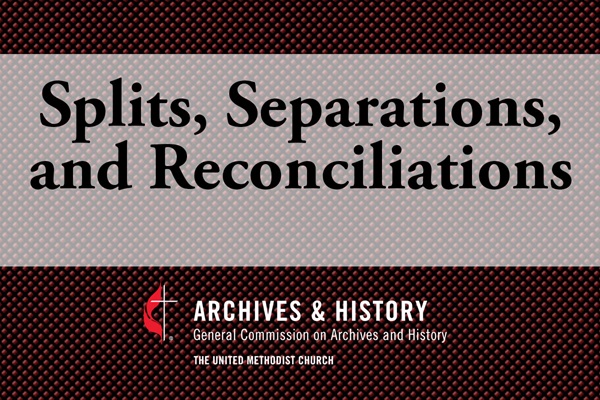The history of The United Methodist Church is the product of more than a few splits, separations and reconciliations. Learn more about this history and who it applies to our church today in this series of short videos featuring Dr. Ashley Boggan Dreff, General Secretary of the General Commission on Archives & History of The United Methodist Church.
Learn more at https://umhistoryhub.teachable.com/
You can also find more about our United Methodist history here.
Introduction
Many United Methodists wonder if what we’re going through today is unprecedented. It is not. Methodism has taken many, many forms as a historic movement of faith. While this might sound a bit disheartening, it also provides room for new growth, new winds of the Spirit, and new forms of Methodist grace to sprout.
1. The Methodist Episcopal Church
The formation of The Methodist Episcopal Church--a predecessor denomination of The United Methodist Church--was itself a split from the Church of England. In 1784, John Wesley went against his own tradition’s ordination standards and ordained Thomas Coke, Richard Whatcoat, and Thomas Vassey to go to the United States, where they would ordain Francis Asbury. Coke and Asbury would become the main leaders of the Methodist Episcopal Church in the United States.
2. Divisions from the Beginning
The Methodist Episcopal Church did not form without conflict. In 1779, five years before it was even officially formed, there was a split off of the Methodist movement in America.
3. United Brethren in Christ and Evangelical Association
Our United Methodist history is not limited to only the denominations to come from John Wesley’s missional movement. The Church of the United Brethren in Christ and the Evangelical Association--two predecessor denominations of The United Methodist Church--were forming around the turn of the 19th century as well.
4. Free African Society
One of the first groups to leave the Methodist Episcopal Church because of its racist policies were Black Methodists in Philadelphia, led by Richard Allen and Absalom Jones. They left St. George’s Methodist Episcopal Church in Philadelphia, in 1787 and formed the Free African Society, which would grow and become the African Methodist Episcopal Church.
5. Mother Zoar
Some Black Methodists in Philadelphia chose to remain within the Methodist Episcopal Church, despite its white supremacy, but sought religious authority by forming their own congregations. In 1796, African Zoar Church north of Philadelphia's city limits was formed with "Black Harry" Hosier as their founding pastor. "Mother Zoar," as the church is known, is the oldest black congregation in the United Methodist tradition with a continuous existence.
6. African Methodist Episcopal Zion Church (AME Zion)
In 1796, a group of Black Methodists left St. John’s Methodist Episcopal Church in New York City to form their own congregation. By 1800 they had their first permanent location, named Zion. In 1821, six conferences within the region elected James Varrick as the first Black bishop of a separate denomination that began to call themselves the African Methodist Episcopal Zion Church in 1848.
7. The Methodist Protestant Church
In 1830, the Methodist Protestant denomination was formed, largely over disagreements surrounding whether or not ordained ministers could or should be enslavers and matters of church governance.
8. Wesleyan Methodist Church of America
As Methodism grew, it became more mainstream with American society, slowly becoming popular among the middle and upper classes. With this shift, it became less bold in its antislavery stance. Those who were staunchly against slavery left the denomination in 1843 and formed the Wesleyan Methodist Church of America, arguably, the largest group to leave the MEC in its first sixty years of existence.
9. The Methodist Episcopal Church, South
The schism that most people think about in Methodist history is that of 1844 which divided the denomination into a northern and southern church.
10. Free Methodists
The Free Methodists formed out of the Methodist Episcopal Church in 1860 largely over the concept of ‘freedom:' freedom for slaves, free (not rented) pews, freedom of the worship of the Holy Spirit and freedom of a transformative experience of the Holy Spirit, freedom from other oaths, and freedom from a perceived abuse of episcopal power.
11. The Methodist Church
In 1939, the Methodist Episcopal Church, the Methodist Episcopal Church, South and the Methodist Protestant Church reunited and formed the Methodist Church. All Black members and clergy of the three denominations were racially segregated into their own jurisdiction, the Central Jurisdiction.
12. Evangelical United Brethren (EUB)
In 1946, The Evangelical Church and the Church of the United Brethren in Christ merged to form the Evangelical United Brethren without the loss of a single congregation.
13. The United Methodist Church
In 1968, the Evangelical United Brethren and The Methodist Church finally formally recognized the similarities of their polity and theology when they merged to form The United Methodist Church.
Conclusion
Methodism is not finished blooming and blossoming. It will continue to bring forth new growths and new forms of grace.





